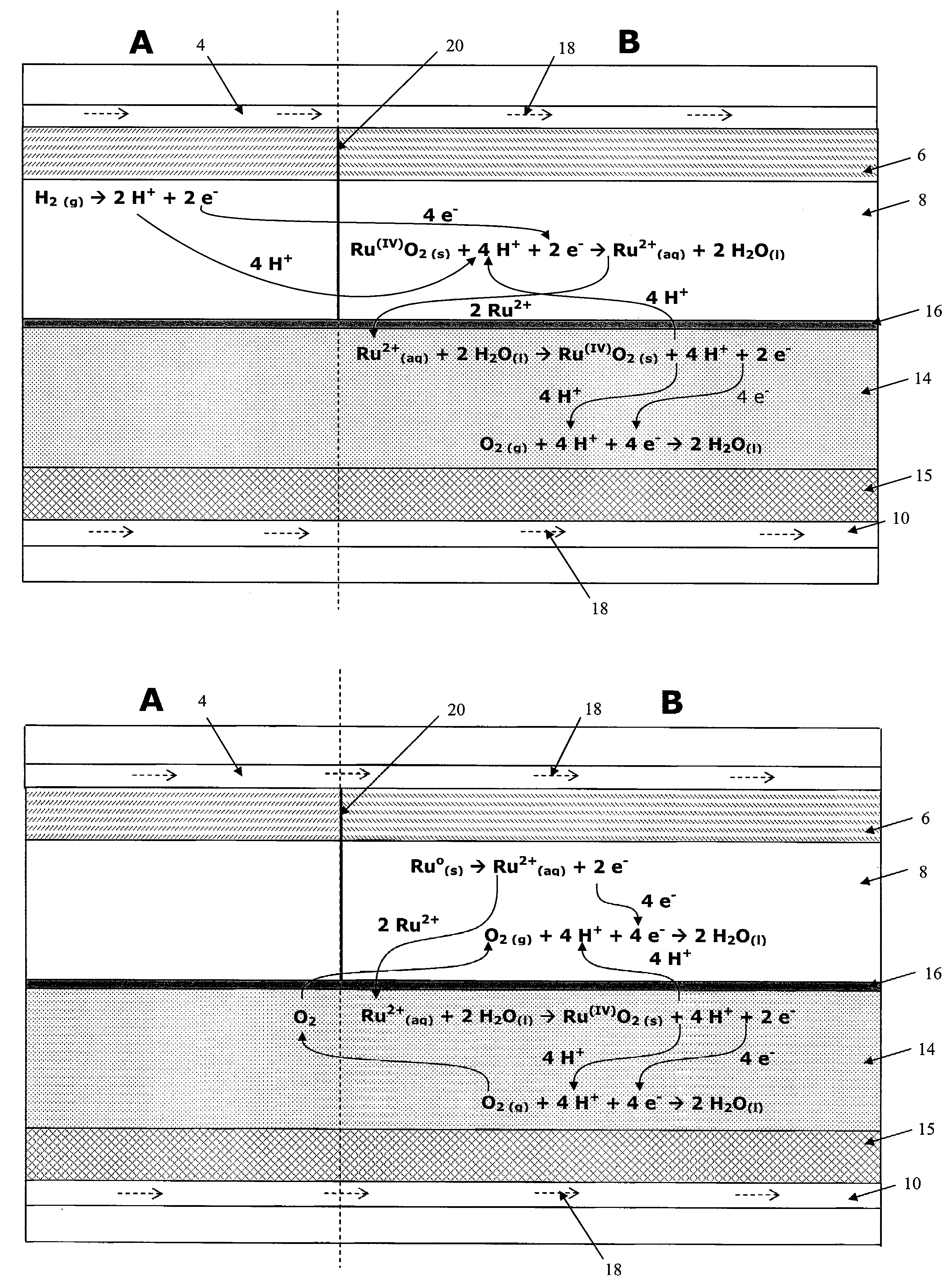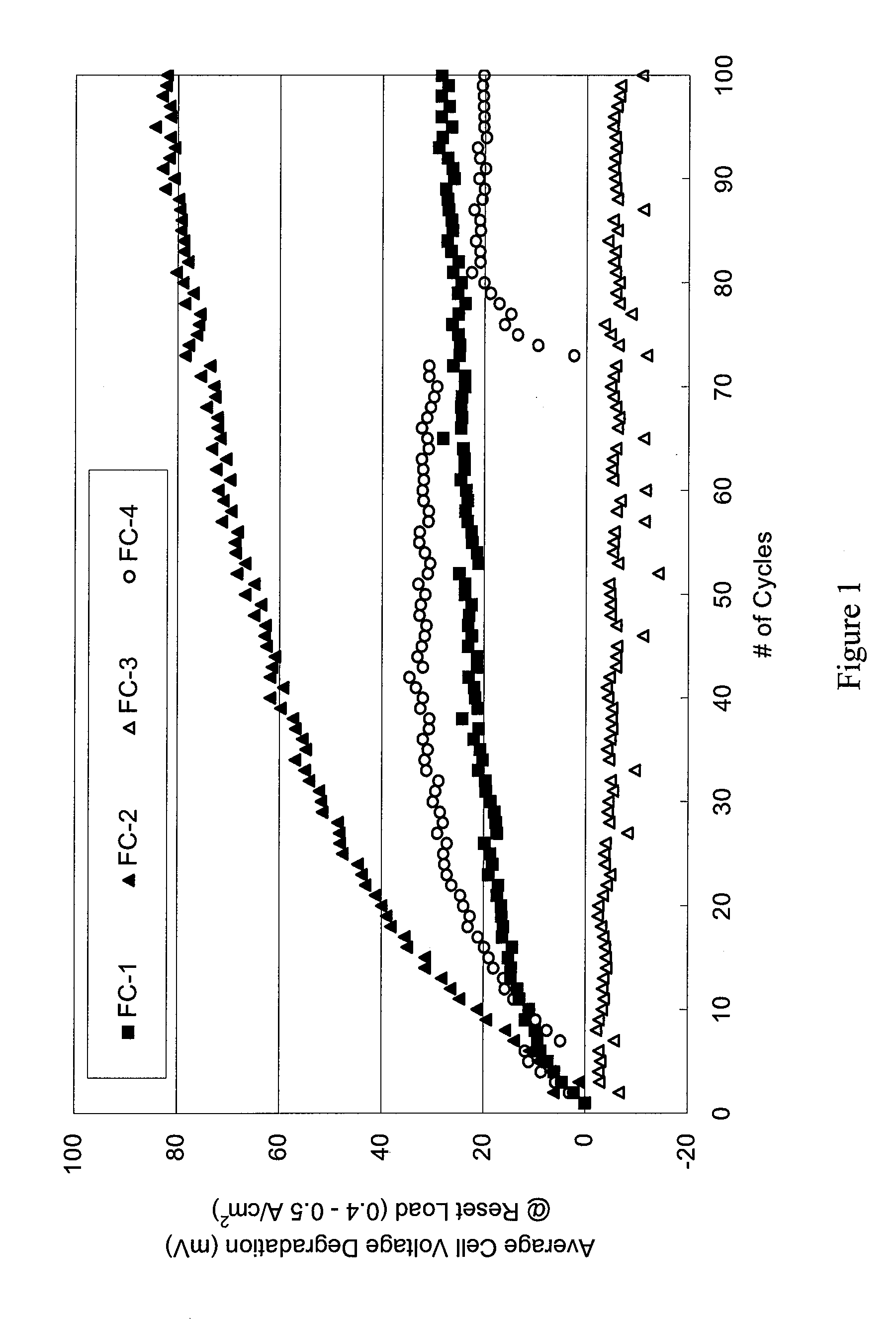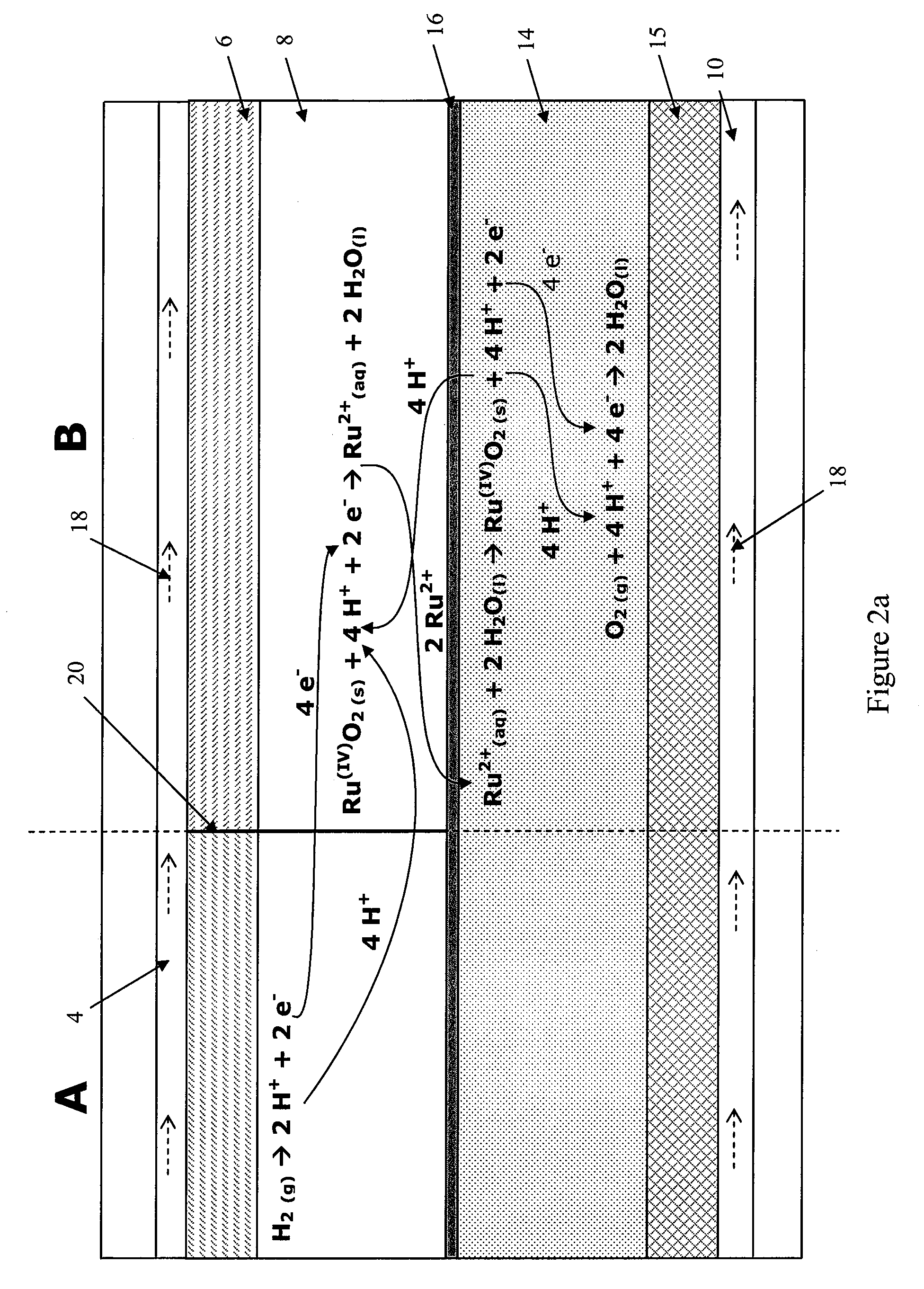Fuel cell anode structure for voltage reversal tolerance
a fuel cell and voltage reversal technology, applied in the field of anodes, can solve the problems of voltage reversal, voltage reversal in a pem fuel cell, voltage reversal, platinum-sensitive catalysts,
- Summary
- Abstract
- Description
- Claims
- Application Information
AI Technical Summary
Benefits of technology
Problems solved by technology
Method used
Image
Examples
example 1
CO Stripping Cyclic Voltammetry
[0107]The cathode performance of a fuel cell incorporating an embodiment of the present anode was tested by CO stripping CV. Sample 11 was identical to Sample 1, described above, except that the anode catalyst contained an 4.5:1 admixture of 50% Pt supported on graphitized carbon black (TKK, Tokyo, JP) and unsupported RuIrO2 (single-phase solid solution (90:10 mole ratio Ru / Ir); Johnson Matthey Plc, London, UK), at a catalyst loading of ˜0.25-0.35 mg Pt / cm2 and ˜0.16-0.17 mg RuIrO2 / cm2. The same CO stripping CV procedure was used as described for Samples 1 and 2.
[0108]The resulting cathode voltammogram for Sample 11 is illustrated in FIG. 10. A comparison of the cathode CO peak at the beginning of the test (A) and the end of the test (B) shows no significant change in oxygen reduction kinetics, indicating no Ru contamination of the cathode catalyst layer. This is consistent with the presence of single phase crystal (rutile) RuIrO2, which has been shown...
example 2
Reversal Tolerance Testing
[0109]The testing of Samples 7-10 clearly demonstrates the unexpected and significant negative impact of the presence of amorphous Ru oxides on MEA cell reversal tolerance. Further cell reversal tolerance testing was performed to demonstrate the impact of the presence or absence of ionomer in the anode catalyst layer mixture.
[0110]MEA Samples 12-14 were assembled and tested using Ballard Mk 902 hardware under the operating conditions described for Samples 7-10, above. Sample 12, which incorporated an embodiment of the present anode, was compared to MEAs with anode catalyst layers comprising catalyst and ionomer. Samples 12-14 were prepared in a like manner to the MEAs described for FC-1-FC-4, above, except that:
[0111](1) the cathode catalyst layer comprised catalyst (50% Pt supported on graphitized carbon black (TKK, Tokyo, JP)) and ionomer (Nafion®) in a 2:1 ratio;
[0112](2) the anode catalyst comprised a 4.5:1 admixture of 50% Pt supported on graphitized c...
example 4
Start / Stop Cycle Testing
Stack FC-8 (EDH 564)
[0122]A further 20-cell Ballard Mk 1100 stack incorporating an embodiment of the present anode was assembled and subjected to start / stop cycle testing. FC-8 was assembled as described for stacks FC-1-FC-4, above, except that the anode catalyst contained an 4.5:1 admixture of 50% Pt supported on graphitized carbon black (TKK, Tokyo, JP) and unsupported RuIrO2 (single-phase solid solution (90:10 mole ratio Ru / Ir); Johnson Matthey Plc, London, UK), at a catalyst loading of 0.25-0.35 mg Pt / cm2 and 0.16-0.17 mg RuIrO2 / cm2. FC-5 was tested according to Duty Cycle 1, as described above.
[0123]FIG. 13 is a graph of the average cell voltage degradation as a function of start / stop cycles for fuel cell stack FC-8. The plots for FC-1-FC-4 from FIG. 1 have also been included for ease of comparison. As shown in FIG. 13, the voltage degradation for FC-8 was dramatically lower than the voltage degradation of FC-2, and was significantly improved over FC-1 o...
PUM
| Property | Measurement | Unit |
|---|---|---|
| output voltage | aaaaa | aaaaa |
| transient voltages | aaaaa | aaaaa |
| corrosion resistant | aaaaa | aaaaa |
Abstract
Description
Claims
Application Information
 Login to View More
Login to View More - R&D
- Intellectual Property
- Life Sciences
- Materials
- Tech Scout
- Unparalleled Data Quality
- Higher Quality Content
- 60% Fewer Hallucinations
Browse by: Latest US Patents, China's latest patents, Technical Efficacy Thesaurus, Application Domain, Technology Topic, Popular Technical Reports.
© 2025 PatSnap. All rights reserved.Legal|Privacy policy|Modern Slavery Act Transparency Statement|Sitemap|About US| Contact US: help@patsnap.com



